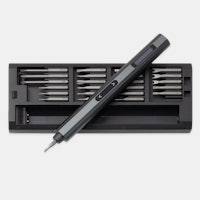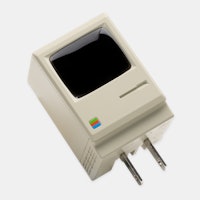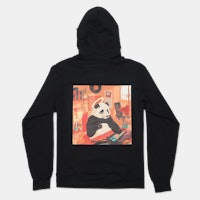Click to view our Accessibility Statement or contact us with accessibility-related questions
















Massdrop 101: Intro to Fountain Pens

search
close
Sort by: Newest
keyboard_arrow_downScio_Me_Scire
88
Aug 13, 2020
Did the fountain pen community die? I just got into pens and I was hoping to find a nice drop :/

halfbellstate
113
Aug 12, 2018
Breather holes aren't actually for air to go in, the fact that some pens don't have them are proof that they aren't necessary. The amount of ink that comes out is so tiny, you only need a little bit of air to go in from under the nib to prevent drawing a vacuum.
The are actually just there because if you saw a piece of metal it will form cracks and fractures. The hole at the end makes sure the slit terminates there. Nowadays nobody uses saws on metals anymore, so it's really just a remnant of the old design.
The are actually just there because if you saw a piece of metal it will form cracks and fractures. The hole at the end makes sure the slit terminates there. Nowadays nobody uses saws on metals anymore, so it's really just a remnant of the old design.
itsmeagain1
9
Aug 26, 2018
halfbellstateNot entirely true. Some nibs don't have that hole, but some fountain pen assemblies need the breather hole so your pen doesn't burp ink all over the paper.
QueenMuri
4
Jul 1, 2018
I have used fountains pens of varying quality since the 4th grade, but I have never had a tutorial like this one. Ever. Even when I bought them from the upscale pen stores. Thank you for such a very informative article!
marlabee
302
Jan 5, 2019
QueenMuriGouletpens.com will blow your mind! A huge wealth of educational info on all things ink and fountain pen related.

Picasso1881
0
May 12, 2018
Great post, thank you for clarifying so many terms and the beautiful photos.
Fire88Fly
2
Apr 30, 2018
The Dude OHTO pens are a lot of fun. I got them on massdrop. 2 for like 40. It is becoming obsessive. People here are not kidding. I will buy 2 more when they come back on. They write just fine. Its my first fountain pen, but I'm lovin it.
Metonymicmortal
0
Apr 22, 2018
Aw I hope this makes people outside the community feel more secure in buying one.

GSP1888
28
Apr 22, 2018
This is an excellent start; knowing them will be quite useful going forward.
Yeah, I’m nit-picking, but one crucial missing item: Ink. Those 3 letters are the preface to a rich and complex subject. I hope that it too is covered in future chapters.
CupofCopy
0
Jan 9, 2018
Very informative article. I look forward to purchasing my first (cheap) fountain pen and learning more! This may become a serious problem for my wallet down the road.
RayF
22220
Jun 14, 2018
And Goulet Pens— if I hadn’t already mentioned them. All fine places willing to trade pens and ink for your bank account.
massivity1
0
Jun 29, 2018
Yes, the TWSBI Eco is an attractive, well made pen, and great value. It performs well.
sdfx
108
Sep 20, 2016
Concise and very informative. It's a great resource to refer back to even if you aren't a beginner.
Showing 19 of 29
PRODUCTS YOU MAY LIKE
Trending Posts in More Community Picks

Graham88
Completely surprised by the lack of blade diversity here on Drop...
I’ve been a collector of Blades since before my teens, and a retailer coming up on 15… or maybe 20 years. Drop has really been kind of an interesting experience for me, because I do occasionally get to see some unusual tech and sometimes EDC items that otherwise I might not have been aware of. And maybe it’s because I have a deep love of cutlery and bladed weapons, but I find myself trolling through the site looking at it what’s available; and it’s just it’s pretty much the same. And the bladed community here is just always confused me.. every single knife is about the same, they’re almost all drop points and although the handle materials change and brands change.. it’s really just the same knife over and over and over again... occasionally you’ll see a tanto or a slight variant; but rarely… and almost never a serrated blade. And I’m just deeply amazed at this diversion of serrated blades. And I’m just surprised there isn’t more of a request for diversity here.... and I...
Mar 12, 2020
JellyDPhoto
Can we get Sony E-Mount or other mirrorless camera options please..
Would be nice to see some Sony E mount full frame cameras on here. I currently shoot with a A99 and they killed the lense path for better or more option lenses and now is all E-Mount. 🤔
Jan 13, 2020
RayF
There Are Pandas, and Then There Are Pandas.
And this isn't either of them! The Pandas we're talking about here, are watches, not bears. And what got me thinking about them (again) was a link posted this morning by @cm.rook who pointed a few of us to the very attractive (and not terribly priced) Yema "Rallygraph" Panda which, in it's most traditional arrangement, looks like the one on the left, but can also be had in the version on the right: The model on the left is a true Panda, while the model on the right is called a reverse Panda. The reason for that distinction is clear--Panda bears, only come in the first arrangement. Now at this point, everyone should be thinking about the most well-know Panda, The Rolex Panda, which is actually a Daytona, and among Rolex Daytonas, the most famous of which is the Paul Newman Daytona, which was famous first, because it was Paul's, and second because it sold at auction for $17.8 million (US Dollars). The story of that auction is well-known so I'll only...
Nov 8, 2019








Chisels and stone, quills and scrolls, and today’s ubiquitous touchpad—people have used myriad tools to record their histories, and none more timeless than the fountain pen. Initially created to make writing more efficient, it’s celebrated today for its complex mechanism and simple pleasure; its ability to turn a routine into a ritual, and to fill every note and letter with personality.
The credit for the first fountain pen goes to Romanian inventor Petrache Poenaru, who received a French patent in 1827. Using a large swan quill as its barrel, it stood apart from its predecessor, the dip pen, by adding an internal reservoir of liquid ink. The ink was drawn from the reservoir through a feed to the nib, and then deposited onto the paper using a combination of gravity and capillary action (more on this later). This method saved users considerable time by allowing them to keep writing without having to repeatedly dip the pen into an inkwell.
Get started with the art of writing with the Schneider Ray Fountain Pen & Rollerball Bundle, now live: https://www.massdrop.com/buy/schneider-ray-fp-rb-bundle
The fountain pen quickly gained popularity, with a steady acceleration in production throughout the mid and late 19th century. It took many iterations—and the inventions of hard rubber, free-flowing ink, and the iridium-tipped gold nib—for it to look like the modern fountain pen most are familiar with today. Over the years, and despite advancements in note taking (the default office ballpoint, smartphone notepad apps galore), it remains the instrument of choice for a dedicated subset of the population.
It’s not all about nostalgia, either. These days, the design and materials are improved and diversified, and durability and portability are more important than ever. There’s something out there for everyone, from first-timers and students to hobbyists and serious collectors. To help you get acquainted with the world of fountain pens, here are a few key terms every ink slinger should know.
Nib: This is the thin, pointed piece of metal on one end of the fountain pen that distributes the ink on the writing surface. Nibs come in a number of tip shapes (round, italic, left-handed, oblique, etc.), sizes (extra-fine, fine, medium, and broad), and materials (gold or steel), all of which have a big impact on how the pen writes. They vary in flexibility, and are often engraved with the company’s logo and other decorative flourishes. We’ll go deeper into these characteristics in a separate post.
Tip (or tipping material): The hardened metal ball that’s welded to the end of the nib. This is what actually touches the paper as you write. The tip is often made of iridium alloy or another metal that’s harder-wearing than the rest of the nib.
Slit: The cut in the nib that the ink flows through. This line splits down the middle of the nib and serves as the function for the capillary action that draws the ink from the feed to the tip.
Tines: The two parts of the nib (right and left side) separated by the slit.
Breather hole: The hole at the end of the slit in the middle of the nib that allows air to travel through and assist ink flow. Some nibs don’t have breather holes, but most do.
Wings: The sides of the nib (on either side of the tines) that reinforce it.
Feed: The part behind the nib (often black in color, but sometimes not) that draws the ink from the pen to the nib.
Feed channel: The slit on the top of the feed that the ink travels down to get from the reservoir to the nib.
Fins: The deep recesses on the underside of the feed that act as regulators for the ink. They fill up with ink to help maintain consistent flow, no matter how fast you’re writing.
Capillary action: The tendency of a liquid to automatically draw itself along a very thin tube as a result of surface tension. This is how ink moves through a fountain pen, and also how water rises inside a plant.
Body (or barrel): The main section of the pen that houses the ink. It can be made of resin/acrylic or metals like aluminum, titanium, or brass, which can lend either a lightweight or heftier feel to the pen. In certain types of pens called demonstrators, the resin barrel is transparent to provide visibility of the internal features.
Reservoir: This is the part of the pen inside the body that houses the ink. Some models have a cartridge or converter inside, while other models can hold the ink directly with no cartridge or converter.
Threads: The grooves that allow one pen part to connect to another. Seen on screw caps, where the body meets the grip section, and elsewhere.
Cap: This one is pretty obvious. The cap’s primary function is to seal the nib from air to keep the water-based ink inside from drying out. It has the added benefit of protecting your pockets from ink stains when you’re carrying your pen. Some caps can be posted on the other end of the pen, which adds length while you write (great for users with larger hands) and also helps balance weight.
Finial: The very top part of the cap. It’s largely decorative but can also be functional, in that it’s responsible for affixing the pen’s pocket clip (if it has one).
Trim (or hardware): This refers to the clip, bands, and any other decorative accents.
Ink window: Some pens have an ink window, a translucent section of the barrel that allows you to see when your ink level is running low.
Built-in filler: A fountain pen that has a built-in reservoir and filling system, and doesn’t require cartridges or converters. The two most common types are piston and vacuum. The body of the pen acts as the ink reservoir, and can be refilled by dipping the nib directly into an ink bottle while twisting the end knob (piston filler) or moving the plunger (vacuum filler). These often have a larger ink capacity than cartridge/converter pens.
Eyedropper pen: A fountain pen designed to be filled with an eyedropper, syringe, or pipette. Many early pens used the eyedropper method and couldn’t be filled any other way. These days, most eyedropper pens are cartridge pens that have been modified in order to increase their ink capacity.
There you have it: Fountain Pens 101. But that’s only the beginning. Look out for posts and tutorials that dig deeper into these topics, and be sure to hit the "Follow" button to be notified about future posts from this account. In the meantime, if you have questions or comments about this post, or about fountain pens in general, leave ‘em below. Have personal recommendations or stories to stare? We’d love to hear them—and see pictures, too!
Get started with the art of writing with the Schneider Ray Fountain Pen & Rollerball Bundle, now live: https://www.massdrop.com/buy/schneider-ray-fp-rb-bundle